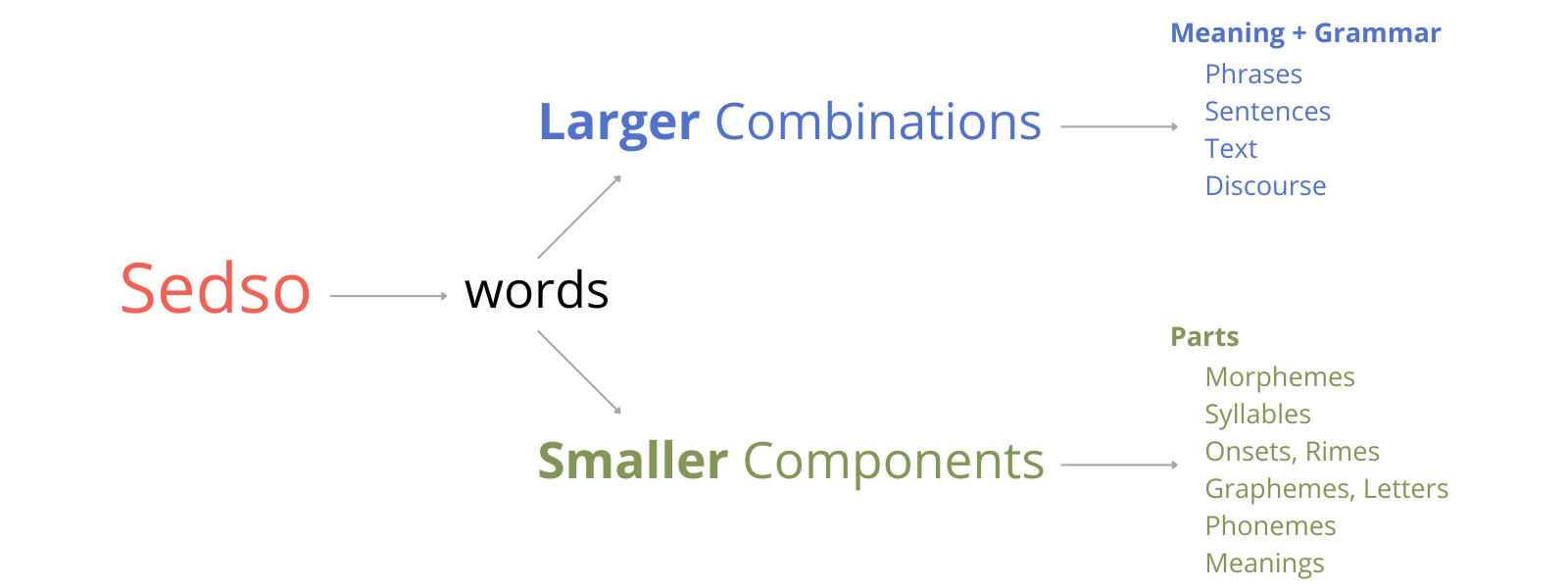Mark's Introduction:
The product consists of entries for every word (about 1600) relevant to preK-3 reading instruction and language development.
The purpose of the product is to give teachers easy access to information relevant to instruction. Currently they collate this information from multiple sources which is time-consuming and results in highly varied instruction.
Our tool allows teachers to spend more time on teaching and less on gathering materials.
Each word’s entry contains information relevant to teaching;the word itself (its meaning, spelling, pronunciation, uses), or
elements that the word contains (onset, rime, phonemes, graphemes, morphemes).Each entry contains basic information about a word’s:
Main meaning with video illustration
Dictionary pronunciation, plus “Local voices” (examples of how it is pronounced “in real life”)
Structure: syllables, morphemes, phonemes, onset-rime.
Properties: frequency in texts and in children’s books, concreteness, predictability of pronunciation (from spelling), and spelling (from pronunciation).
Neighborhoods: patterns across words involving different parts, types of information
Usage in sentences and familiar expressionsThe “science of reading” is built into these entries. The information that is included is based on an enormous body of well-established research about learning to read, emphasizing properties that can facilitate learning (such as consistent patterns across words) or interfere with learning (such as spelling-sound mappings that are inconsistent across words).
The entries for many words include one or more “word stories,” audio recordings in which an expert provides information about properties of words and how they can be used in instruction. They function as “microlearning” experiences about the “science of reading”. Teachers can learn about research-based concepts as the need arises. Word stories are included for all traditional “sight words” (from Dolch and other lists), which are challenging to teach because they are irregular in some way. How can such words be taught without requiring rote memorization, which is difficult? The answer is: showing how the word patterns with “neighbors” that overlap in some way. Almost all words have “friends” that can be learned together.
Each entry also includes a link and QR code for a Deep Dive that includes other materials for instruction (e.g., worksheets) and assessment, explainers of terms and ideas, and links to additional material.

Sedso is your guide to teaching every word and word-part. It gives you quick, easy access to properties of words that are important for learners.
The Science of Reading is baked into Sedso.It shows properties of words most relevant to becoming a reader.
It incorporates the fact that words are easier to learn when they are a part of pattern:
spelling, phonology, phonics, meaning, or morphology.Sedso works with every curriculum. Find the words or patterns you are teaching and Sedso provides the information you need to plan a lesson.
Potential Applications:
For Teachers
1. Support those that need help breaking words down into phonemes or morphemes.

2. Find words that can be taught together in order to highlight overlapping patterns and similarities.

3. Create word lists based on characteristics they are interested in teaching: phonemes, letters, spelling patterns, themes, etc.

Different spellings patterns for the long o sound

Words that are related to a common theme or topic

4. Use word trees to teach about the relationships between words.

5. Find activities for their students to complete in class or take home.

Developing New Materials for Teachers and/or Students
A wide range of data about words that can be used to make decisions about what words to include in books, worksheets, teaching materials, etc.
For each word there is information on:`
How frequent it is in a corpus of schoolbooks
How frequent it is in a corpus of children’s books
It’s position in the Dolch and Fry lists
Age it is typically learned
How imageable/concrete it is
How predictable the pronunciation is
How predictable the spelling is
The letters, phonemes, syllables, and morphemes
Different regional pronunciations
Examples of use in sentences
Common phrases it appears in
What words rhyme, and if they have a similar spelling
Words that look like they should rhyme but do not
Words that include similar spelling patterns
Morphologically related words
Words that are similar in meaning
Thematically related words
##
CONFIDENTIAL // Not to be shared